
0
+
Google Reviews
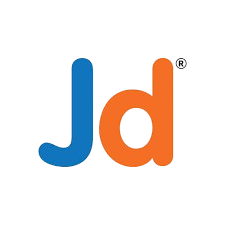
0
+
5 (2188 Ratings)
Earning the Docker Certified Associate (DCA), Certified Kubernetes Administrator (CKA), and Certified Kubernetes Application Developer (CKAD) certifications together demonstrates comprehensive expertise in containerization and Kubernetes technologies. The combination of these certifications demonstrates a high level of competence in containerization and Kubernetes technologies, making individuals equipped to excel in a variety of roles within cloud-native and DevOps projects


Curriculum Designed by Experts
Docker
Kubernetes
Advanced Kubernetes
Domain 1: Orchestration (25% of exam)
Domain 2: Image Creation, Management, and Registry (20% of exam)
Domain 3: Installation and Configuration (15% of exam)
Domain 4: Networking (15% of exam)
Domain 5: Security (15% of exam)
Domain 6: Storage and Volumes (10% of exam)
CKA Curriculum V1.13.0
5% – Scheduling
5% – Logging/Monitoring
8% – Application Lifecycle Management
11% – Cluster
12% – Security
7% – Storage
10% – Troubleshooting
19% – Core Concepts
11% – Networking
12% – Installation, Configuration & Validation
Certified Kubernetes Application Developer (CKAD) Exam Curriculum v1.13.0
13% – Core Concepts
18% – Configuration
10% – Multi-Container Pods
18% – Observability
20% – Pod Design
13% – Services & Networking
8% – State Persistence
Enroll in the Complete Docker and Kubernetes (DCA+ CKA + CKAD) Course Certification with Training. Learn in-demand skills like container orchestration, automation, and security. Gain hands-on experience to boost your expertise, perfect for advancing your DevOps career and becoming certified!
AUnlock top career opportunities with the Complete Docker and Kubernetes (DCA+ CKA + CKAD) Course Certification with Training. Master containerization, orchestration, and cloud-native skills, opening doors to roles like DevOps Engineer, Cloud Architect, and more. Accelerate your career growth today!
Accelerate cloud adoption with the Complete Docker and Kubernetes (DCA+ CKA + CKAD) Course Certification with Training. Learn essential containerization, orchestration, and cloud-native skills for seamless cloud migration and management. Enroll now to drive efficient cloud transformations!
Boost scalability and flexibility with the Complete Docker and Kubernetes (DCA+ CKA + CKAD) Course Certification with Training. Master container orchestration and microservices, enabling dynamic scaling and agile workflows. Enroll today to future-proof your career and enhance your cloud infrastructure!
Manage costs effectively by enrolling in our Complete Docker and Kubernetes (DCA+ CKA + CKAD) course. Gain in-depth knowledge with hands-on training, ensuring you master Docker and Kubernetes certification. Achieve certification in one streamlined course, saving time and expenses.
Ensure robust security and compliance with our Complete Docker and Kubernetes (DCA+ CKA + CKAD) course training. Learn industry best practices, safeguard containers, and manage security risks while meeting compliance standards. Achieve certification with expert guidance for secure, compliant cloud operations.
Radical Technologies is the leading IT certification institute in Pune, offering a wide range of globally recognized certifications across various domains. With expert trainers and comprehensive course materials, it ensures that students gain in-depth knowledge and hands-on experience to excel in their careers. The institute’s certification programs are tailored to meet industry standards, helping professionals enhance their skillsets and boost their career prospects. From cloud technologies to data science, Radical Technologies covers it all, empowering individuals to stay ahead in the ever-evolving tech landscape. Achieve your professional goals with certifications that matter.
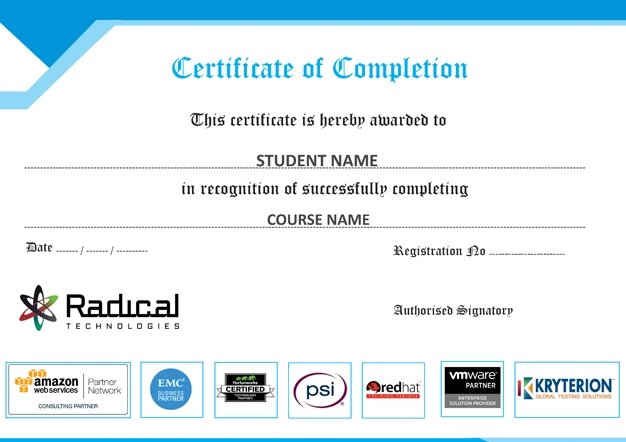


At Radical Technologies, we are committed to your success beyond the classroom. Our 100% Job Assistance program ensures that you are not only equipped with industry-relevant skills but also guided through the job placement process. With personalized resume building, interview preparation, and access to our extensive network of hiring partners, we help you take the next step confidently into your IT career. Join us and let your journey to a successful future begin with the right support.
At Radical Technologies, we ensure you’re ready to shine in any interview. Our comprehensive Interview Preparation program includes mock interviews, expert feedback, and tailored coaching sessions to build your confidence. Learn how to effectively communicate your skills, handle technical questions, and make a lasting impression on potential employers. With our guidance, you’ll walk into your interviews prepared and poised for success.
At Radical Technologies, we believe that a strong professional profile is key to standing out in the competitive IT industry. Our Profile Building services are designed to highlight your unique skills and experiences, crafting a resume and LinkedIn profile that resonate with employers. From tailored advice on showcasing your strengths to tips on optimizing your online presence, we provide the tools you need to make a lasting impression. Let us help you build a profile that opens doors to your dream career.

Infrastructure Provisioning
Implementing automated infrastructure provisioning and configuration management using Ansible. This may include setting up servers, networking devices, and other infrastructure components using playbooks and roles.

Applications Deployment
Automating the deployment and orchestration of applications across development, testing, and production environments. This could involve deploying web servers, databases. middleware, and other application components using Ansible

Continuous Integration
Integrating Ansible into CI/CD pipelines to automate software. build, test, and deployment processes. This may include automating the creation of build artifacts, running tests, and deploying applications to various environments.

The Docker Kubernetes course at Radical Technologies was a game-changer for me. The hands-on labs and expert guidance helped me grasp complex concepts effortlessly.
Radical Technologies provided an excellent learning environment for mastering Docker and Kubernetes. The instructors were knowledgeable and supportive, making my learning experience truly enjoyable.
I highly recommend Radical Technologies for anyone looking to dive deep into Docker and Kubernetes. The course content was comprehensive, and the practical exercises were invaluable.
Enrolling in the Docker Kubernetes course at Radical Technologies was one of the best decisions I made. The course structure was well-organized, and the instructors were incredibly patient and helpful.
Radical Technologies exceeded my expectations with their Docker Kubernetes training. The hands-on approach and real-world projects gave me the confidence to apply my skills in professional settings.
The Docker Kubernetes certification course at Radical Technologies was challenging yet rewarding. The supportive instructors and interactive sessions made the learning process engaging and effective.
I am grateful for the opportunity to learn Docker and Kubernetes at Radical Technologies. The course materials were comprehensive, and the practical exercises helped solidify my understanding.
Radical Technologies provided me with the skills and knowledge needed to excel in Docker and Kubernetes. The instructors were dedicated to ensuring that every student succeeded.
I cannot thank Radical Technologies enough for their Docker Kubernetes training. The hands-on labs and personalized attention from the instructors were instrumental in my learning journey.
The Docker and Kubernetes course at Radical Technologies equipped me with the tools to tackle real-world challenges. The practical experience gained through the course was invaluable.
I was impressed by the depth of knowledge and expertise of the instructors at Radical Technologies. The Docker Kubernetes course was well-structured, and the support provided was exceptional.
Radical Technologies provided me with a solid foundation in Docker and Kubernetes. The course content was comprehensive, and the instructors were always available to clarify doubts.
Enrolling in the Docker Kubernetes course at Radical Technologies was a wise investment in my career. The practical skills gained through the course have opened up new opportunities for me.
I cannot recommend Radical Technologies enough for Docker and Kubernetes training. The instructors went above and beyond to ensure that every student succeeded.
The Docker Kubernetes course at Radical Technologies was exactly what I needed to advance in my career. The hands-on experience and industry insights were invaluable.
Radical Technologies helped me bridge the gap between theory and practice in Docker and Kubernetes. The instructors were knowledgeable and supportive throughout the course.
I am grateful to Radical Technologies for providing me with the skills and confidence to work with Docker and Kubernetes. The course was well-paced and highly informative.
The Docker Kubernetes training at Radical Technologies exceeded my expectations. The instructors were engaging, and the course content was relevant to industry needs.
Radical Technologies played a crucial role in helping me master Docker and Kubernetes. The instructors were patient and provided personalized attention whenever needed.
I cannot thank Radical Technologies enough for their Docker Kubernetes course. The practical exercises and real-world projects were instrumental in enhancing my skills.
The Docker and Kubernetes training at Radical Technologies was comprehensive and well-structured. I would highly recommend it to anyone looking to advance their career in cloud-native technologies.
Radical Technologies provided me with the knowledge and skills needed to excel in Docker and Kubernetes. The instructors were supportive, and the course content was top-notch.
I am incredibly grateful for the Docker Kubernetes course at Radical Technologies. The hands-on experience and expert guidance were invaluable in preparing me for real-world challenges.
Enrolling in the Docker Kubernetes course at Radical Technologies was a turning point in my career. The practical skills gained through the course have opened up new opportunities for me.
Radical Technologies provided me with a comprehensive understanding of Docker and Kubernetes. The instructors were knowledgeable and supportive, making the learning process enjoyable.








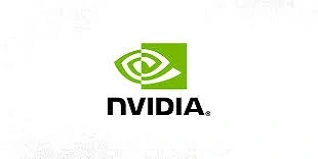
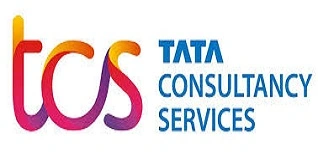



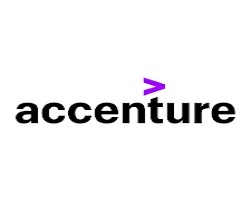
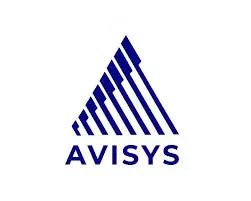
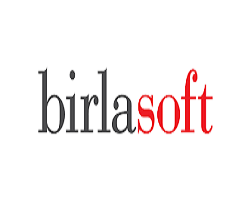
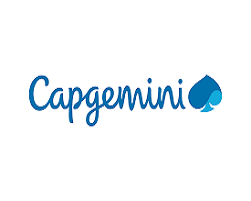
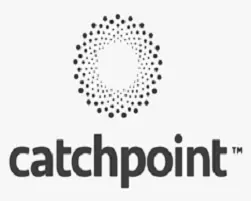


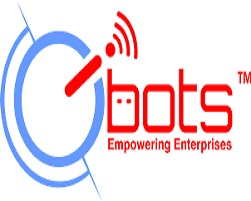
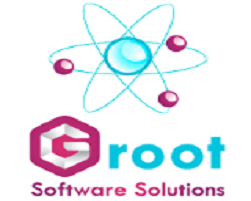




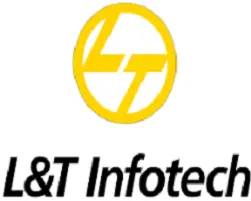
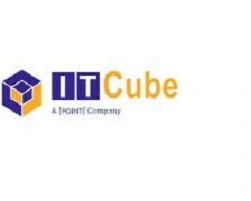

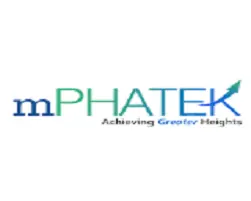
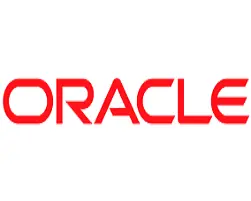



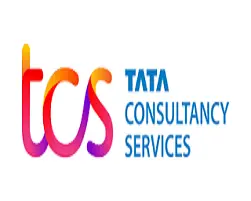

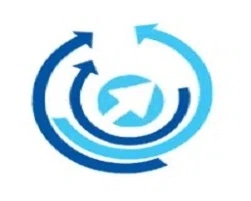
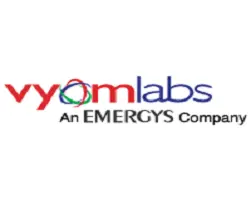
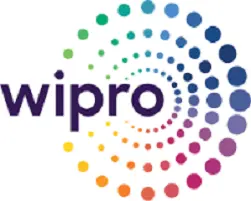
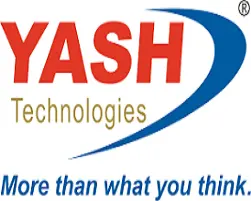
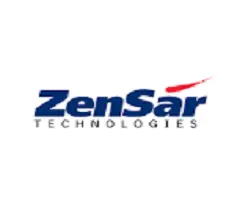
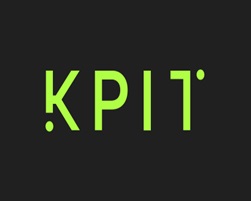

Docker Certification validates your skills in Docker technology, demonstrating your proficiency in deploying, managing, and scaling Dockerized applications.
You can prepare for Docker Certification by taking Docker courses, practicing with Docker containers, and exploring Docker documentation and resources.
Docker Certification enhances your credibility in the industry, improves your job prospects, and validates your expertise in Docker technology.
A Kubernetes Course provides comprehensive training on Kubernetes, covering its architecture, deployment, management, and orchestration of containerized applications.
You can enroll in a Kubernetes Course either online or in a classroom setting through institutes like Radical Technologies in Pune.
Kubernetes Certification validates your skills in Kubernetes, demonstrating your ability to design, deploy, and manage Kubernetes clusters efficiently.
Research institutes offering Kubernetes courses, read reviews, and compare course content, trainers’ expertise, and job placement assistance to find the best one for you.
Yes, many institutes offer Kubernetes Online Courses, allowing you to learn at your own pace from anywhere with an internet connection.
Docker and Kubernetes Training typically covers Docker basics, Kubernetes fundamentals, container orchestration, and hands-on labs for practical experience.
Yes, Docker Kubernetes Certification can significantly boost your career prospects in the rapidly growing field of containerization and cloud computing.
The duration of a Docker Training Course varies depending on the institute and the depth of the curriculum, but it typically ranges from a few weeks to a few months.
While there are no strict prerequisites, having basic knowledge of Linux, containers, and cloud computing concepts can be beneficial for Docker Kubernetes Training.
Yes, many institutes offer Docker and Kubernetes Certification courses online, providing flexibility for working professionals and remote learners.
The cost of Docker Kubernetes Certification varies depending on the institute and the level of certification you pursue. It’s advisable to check with the training provider for specific pricing details.
Yes, you can find Docker Kubernetes Training online in India through various institutes offering remote learning options.
Ambegaon Budruk | Aundh | Baner | Bavdhan Khurd | Bavdhan Budruk | Balewadi | Shivajinagar | Bibvewadi | Bhugaon | Bhukum | Dhankawadi | Dhanori | Dhayari | Erandwane | Fursungi | Ghorpadi | Hadapsar | Hingne Khurd | Karve Nagar | Kalas | Katraj | Khadki | Kharadi | Kondhwa | Koregaon Park | Kothrud | Lohagaon | Manjri | Markal | Mohammed Wadi | Mundhwa | Nanded | Parvati (Parvati Hill) | Panmala | Pashan | Pirangut | Shivane | Sus | Undri | Vishrantwadi | Vitthalwadi | Vadgaon Khurd | Vadgaon Budruk | Vadgaon Sheri | Wagholi | Wanwadi | Warje | Yerwada | Akurdi | Bhosari | Chakan | Charholi Budruk | Chikhli | Chimbali | Chinchwad | Dapodi | Dehu Road | Dighi | Dudulgaon | Hinjawadi | Kalewadi | Kasarwadi | Maan | Moshi | Phugewadi | Pimple Gurav | Pimple Nilakh | Pimple Saudagar | Pimpri | Ravet | Rahatani | Sangvi | Talawade | Tathawade | Thergaon | Wakad
I had an amazing experience with this service. The team was incredibly supportive and attentive to my needs. The quality of the work exceeded my expectations. I would highly recommend this to anyone looking for reliable and professional service."
I had an amazing experience with this service. The team was incredibly supportive and attentive to my needs. The quality of the work exceeded my expectations. I would highly recommend this to anyone looking for reliable and professional service."
I had an amazing experience with this service. The team was incredibly supportive and attentive to my needs. The quality of the work exceeded my expectations. I would highly recommend this to anyone looking for reliable and professional service."
I had an amazing experience with this service. The team was incredibly supportive and attentive to my needs. The quality of the work exceeded my expectations. I would highly recommend this to anyone looking for reliable and professional service."
I had an amazing experience with this service. The team was incredibly supportive and attentive to my needs. The quality of the work exceeded my expectations. I would highly recommend this to anyone looking for reliable and professional service."
The Complete Docker & Kubernetes (DCA + CKA + CKAD) Certification is a comprehensive course designed for professionals looking to master containerization and orchestration using Docker and Kubernetes. This certification combines the essential skills required to excel in three highly sought-after certifications—Docker Certified Associate (DCA), Certified Kubernetes Administrator (CKA), and Certified Kubernetes Application Developer (CKAD). The program equips individuals with the expertise needed to manage, deploy, and troubleshoot containerized applications in complex production environments, making it ideal for DevOps engineers, software developers, system administrators, and IT professionals.
The Complete Docker & Kubernetes (DCA + CKA + CKAD) Certification is structured to provide a deep understanding of both Docker and Kubernetes technologies. With a hands-on approach, participants will learn how to build, ship, and run distributed applications using Docker containers and orchestrate them using Kubernetes clusters.
By completing this certification, participants will:
This course is ideal for:
The Complete Docker & Kubernetes (DCA + CKA + CKAD) Certification equips professionals with the skills to use containerization and orchestration in various real-world applications. By mastering Docker and Kubernetes, certified professionals can implement scalable, efficient, and secure solutions in modern IT environments. These technologies are widely adopted across industries for development, deployment, and management of cloud-native applications. Here are some key applications of the knowledge gained through this certification.
1. Cloud-Native Application Development
Docker and Kubernetes have become essential tools for building and deploying cloud-native applications. These applications are designed to run in cloud environments, making them highly scalable and resilient. Kubernetes allows developers to automate the deployment and scaling of containerized applications, while Docker enables consistent environments across development, testing, and production. Certified professionals can streamline the entire lifecycle of cloud-native applications, ensuring smooth and efficient operations.
2. DevOps and CI/CD Pipelines
One of the most significant applications of Docker and Kubernetes is in DevOps and Continuous Integration/Continuous Deployment (CI/CD) pipelines. Docker helps developers create isolated and reproducible environments, which can be used to test and deploy code more efficiently. Kubernetes automates the orchestration of these containers in production. With expertise in Docker and Kubernetes, professionals can implement CI/CD pipelines that enable rapid development, testing, and deployment cycles, enhancing the overall software delivery process.
3. Microservices Architecture
Microservices architecture, where applications are broken down into smaller, independent services, is now a common approach in modern software development. Docker containers provide the perfect environment for running microservices, and Kubernetes orchestrates them efficiently. With the Complete Docker & Kubernetes Certification, professionals can design, deploy, and manage microservices-based applications, ensuring fault tolerance and scalability. Kubernetes’ service discovery, load balancing, and rolling updates further ensure that microservices operate seamlessly.
4. Application Scaling and High Availability
Kubernetes excels in ensuring high availability and scalability for containerized applications. Certified professionals can configure Kubernetes clusters to automatically scale applications up or down based on demand, ensuring optimal resource usage and reducing downtime. This is especially useful in environments with fluctuating traffic, such as e-commerce platforms or SaaS applications. Docker containers make scaling applications easier, and Kubernetes manages the scaling process with ease, ensuring that businesses can handle traffic spikes without performance issues.
5. Container Orchestration in Hybrid and Multi-Cloud Environments
Organizations are increasingly adopting hybrid cloud and multi-cloud environments to enhance flexibility and reduce dependency on a single cloud provider. Kubernetes, being cloud-agnostic, is the perfect orchestration tool for managing containers across multiple cloud platforms or on-premises environments. With this certification, professionals can deploy and manage Kubernetes clusters in hybrid or multi-cloud setups, ensuring consistency, scalability, and ease of management across diverse infrastructures.
6. Automated Deployment and Management of Containers
Kubernetes simplifies the automated deployment and management of containers in production environments. It helps ensure that containers are deployed in the correct configuration and updated automatically. Through the skills learned in the CKA and CKAD certifications, professionals can deploy complex applications using Kubernetes, ensure continuous application availability, and manage container lifecycles with automation, including rolling updates, blue/green deployments, and auto-scaling.
7. Efficient Resource Utilization
Using Docker and Kubernetes, IT teams can ensure efficient use of computing resources. Kubernetes dynamically allocates resources to containers based on the application’s needs, reducing wastage and ensuring that resources are available when needed. Certified Docker and Kubernetes professionals can optimize infrastructure to lower costs and improve performance, making sure that resource utilization is aligned with business demands.
8. Disaster Recovery and Fault Tolerance
Kubernetes provides powerful features for disaster recovery and fault tolerance, ensuring that applications remain available even when failures occur. By mastering Kubernetes administration through the CKA certification, professionals can design fault-tolerant systems that automatically recover from failures, replicate services across nodes, and provide backup strategies that safeguard against data loss or downtime. This makes Docker and Kubernetes essential for mission-critical applications where uptime is crucial.
9. Security and Compliance
Docker and Kubernetes offer robust security features that allow organizations to enforce security policies and maintain compliance. With Docker, containers are isolated, reducing the attack surface for applications. Kubernetes adds additional layers of security by managing role-based access control (RBAC), network policies, and secret management. Certified professionals are well-equipped to implement security best practices, ensuring that applications are compliant with industry standards and secure against potential threats.
10. Edge Computing and IoT Deployments
With the rise of edge computing and IoT applications, Docker and Kubernetes have found new use cases. Edge devices often have limited resources, and Docker containers can be used to deploy lightweight applications on these devices. Kubernetes can orchestrate and manage these deployments across a network of edge devices. Certified professionals can use their knowledge to deploy and manage containerized applications across distributed edge environments, ensuring low latency and high availability for IoT applications.
At Radical Technologies, we are pioneers in providing comprehensive training and certification programs in cutting-edge technologies like Docker and Kubernetes. With a focus on empowering individuals with the skills needed to thrive in the rapidly evolving world of containerization and cloud computing, we offer a wide range of courses tailored to meet the needs of both beginners and seasoned professionals.
Our Docker Kubernetes Course is designed to equip participants with in-depth knowledge and practical skills essential for deploying, managing, and scaling containerized applications efficiently. Whether you’re looking to kickstart your career in DevOps, enhance your expertise in cloud-native technologies, or stay ahead in the competitive IT landscape, our expert-led training programs provide the perfect platform for you to achieve your goals.
At Radical Technologies, we go beyond traditional classroom learning by offering flexible learning options, including online courses and in-person training sessions. Our experienced instructors, who are industry experts with real-world experience, ensure that you receive top-notch guidance and mentorship throughout your learning journey.
With a focus on hands-on learning, our Docker and Kubernetes Training Courses include practical exercises, case studies, and real-world projects that simulate industry scenarios, allowing you to apply your knowledge in a practical setting. Additionally, our job placement assistance program helps you connect with top companies seeking skilled professionals in Docker and Kubernetes technologies, ensuring that you have the best opportunities to kickstart your career or advance to the next level.
Whether you’re looking to earn Docker and Kubernetes Certifications to validate your skills or simply want to enhance your expertise in these transformative technologies, Radical Technologies is your trusted partner in achieving success. Join us today and embark on a rewarding journey towards mastering Docker and Kubernetes, and unlocking new opportunities in the dynamic world of cloud-native computing.

(Our Team will call you to discuss the Fees)
